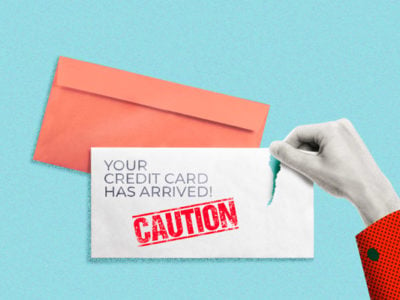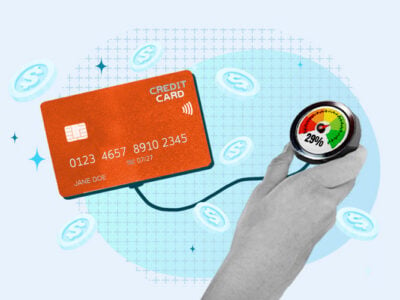Table of Contents
What is a debt-to-credit ratio?
Your debt-to-credit ratio, also known as your credit utilization rate, is a percentage that represents how much of your available credit you actually use. Specifically, your debt-to-credit ratio applies to revolving credit (e.g., credit cards, store credit, and other lines of credit) but not installment loans (e.g., car loans and student loans).
You may come across the following terms, all of which also refer to your debt-to-credit ratio:
- Credit utilization rate
- Utilization ratio
- Balance-to-limit ratio
- Debt-to-limit ratio
- Debt to credit rate
- Debt to available credit ratio
What’s a good debt-to-credit ratio?
As a general rule, your debt-to-credit ratio should be as low as possible. You should try to keep it from reaching 30%, and many experts recommend keeping it below 10%. In 2019, people with perfect FICO scores had a credit utilization rate of 4.1% on average.1 The credit scoring models reward a low debt-to-credit ratio because it demonstrates your ability to use your credit in a responsible manner.
With that said, while FICO and VantageScore recommend keeping your utilization rate low, they also emphasize that the ideal debt-to-credit ratio is relative and that your personal credit history affects how influential this percentage is.1 You should focus on keeping your debt-to-credit ratio low across all of your accounts rather than trying to hit a particular percentage.
How to calculate your debt-to-credit ratio
To calculate your debt-to-credit ratio, you should divide your balance (the amount you owe) by your credit limit and then multiply the result by 100 to get a percentage. This percentage represents how much of your available credit you’re using.
If you have multiple revolving accounts, then each account has its own debt-to-credit ratio. You also have an overall debt-to-credit ratio, which takes into consideration how much credit you’re using across all of your accounts.
How to calculate your debt-to-credit ratio for individual credit accounts
To calculate the debt-to-credit ratio for each of your accounts, divide your balance (debt) by your credit limit.
For example, here’s how you’d calculate the debt-to-credit ratio for a credit card with a balance of $200 and limit of $1,000:
200 / 1,000 = 0.2
The value 0.2 indicates a debt-to-credit ratio of 20%.
How to calculate your overall debt-to-credit ratio
As the name suggests, your overall debt-to-credit ratio represents the amount of credit you’re using across all of your accounts. To calculate your overall debt-to-credit ratio, follow the same process described above after adding together all of your balances and all of your limits.
For example, if you have two cards that both have credit limits of $1,000, and you owe $200 on one card and $300 on the other, you’d perform the following calculations:
Balances: $200 + $300 = $500
Limits: $1,000 + $1,000 = $2,000
500 / 2,000 = 0.25
This indicates that your overall debt-to-credit ratio is 25%.
How to calculate your 30% credit utilization limit
To find out how much you’d need to spend on your credit card to have a credit utilization rate of 30%, multiply your credit limit by 0.3.
For example, let’s say you have a credit card with a $5,000 limit:
5,000 × 0.3 = 1,500
In this case, you would need to spend $1,500 to have a 30% debt-to-credit ratio.
How your debt-to-credit ratio affects your credit score
Your debt-to-credit ratio is one of the main factors that FICO and VantageScore use to calculate your credit score.
In VantageScore’s model, it accounts for 20% of your credit score. In the FICO model, its specific weighted percentage isn’t clear; rather, your debt-to-credit ratio is one of five factors in the Amounts Owed category, which accounts for 30% of your credit score.2
Both scoring models, however, penalize you for having a high credit utilization rate and reward you for having a low utilization rate.
Your HELOC debt-to-credit ratio may not affect your credit score
Although home equity lines of credit (HELOCs) are classed as revolving credit accounts, Experian claims that FICO’s model doesn’t factor them into your utilization rate.3 This means you may be able to use a HELOC to pay down your credit card balances and lower your credit utilization rate, which will improve your credit score.
How your debt-to-credit ratio affects your car and home loan options
Your debt-to-credit ratio is a major factor that contributes to your credit score. It also is correlated with your debt-to-income ratio (DTI), although it doesn’t directly affect it. Both of these factors influence the mortgages and auto loans you’re eligible for.
Debt-to-credit ratio vs. debt-to-income ratio
Your DTI is a percentage that represents how much of your total income (before taxes) goes toward paying off your debts. It’s a major factor that affects what loans you’re eligible for.
Your debt-to-credit ratio and DTI ratio have a few key differences:
- Effect on your credit score: Your debt-to-credit ratio affects your credit score, whereas your debt-to-income ratio does not. In fact, your income does not affect your credit score at all.4
- Type of credit: Your debt-to-credit ratio only considers debt on revolving accounts like credit cards, whereas your debt-to-income ratio takes into account all of your debts, including installment loans and open credit accounts.
Although your debt-to-credit ratio isn’t directly related to your income, a high debt-to-credit ratio suggests that you might also have a high debt-to-income ratio. This signals to lenders that there’s a risk you won’t be able to make consistent loan or mortgage payments.
What to do if you have a high debt-to-credit ratio
Here are some things you can do to lower your debt-to-credit ratio:
- Redistribute your debts: If you have multiple cards, you can transfer your balances around to minimize the number of credit accounts with a debt-to-credit ratio above 30%. This may improve your credit score, although VantageScore notes that it isn’t guaranteed to work, as you also may incur penalties if it leads to you having too many accounts with active balances.7
- Ask for an increase on your credit card limit: Contact your creditor and ask for a credit limit increase. If they agree (and you continue to spend the same amount on that card), then your credit utilization rate will decrease.
- Don’t close old accounts: If you have a credit card account that you’ve paid off and no longer need, keeping the account open will lower the average debt-to-credit ratio across all of your accounts.
Takeaway: Your debt-to-credit ratio is the percentage of your available credit that you’re using
- Try to keep your debt-to-credit ratio as low as you can. Aim to use less than 10% of your available credit, and never use more than 30%.
- Your debt-to-credit ratio is a major factor that affects your credit score. It contributes to 30% of your total FICO credit score and 20% of your VantageScore credit score.
- Your debt-to-credit ratio affects your auto loan and mortgage options by contributing to your credit score. It is also indirectly correlated with your debt-to-income ratio, which lenders also look at.
- Your debt-to-credit ratio is different from your debt-to-income ratio, which denotes the percentage of your total income that goes towards debt repayment.







